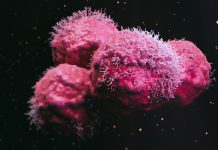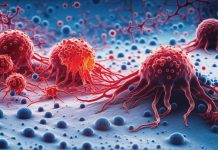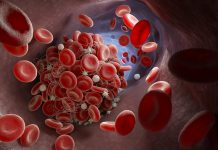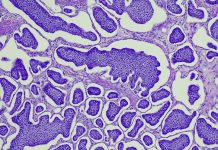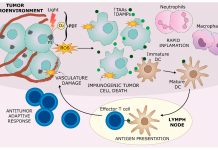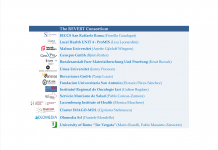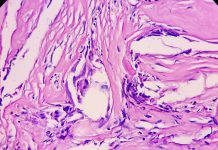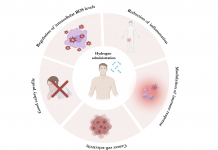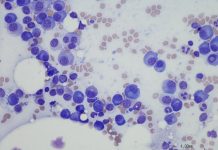Home 2024
Archives
Artificial intelligence (AI) in mammographic screening in Norway
BreastScreen Norway discusses how the results from their screening programme for early breast cancer detection can influence future artificial intelligence to streamline early breast cancer detection.
From selfish silo to collaborative culture – embracing data-enabled cancer research
Aedin Culhane and Mark Lawler, Co-Leads of the eHealth Hub for Cancer, reflect on their data-enabled cancer research journeys, how their collaborative team science approach has reaped significant dividends in cancer research and policy and how the hub is inducing a paradigm shift in how health data are deployed on the island of Ireland.
Personalized cancer medicines
Dr. Priya Hays, PhD, CEO and Science Writer at Hays Documentation Specialists, LLC, guides us through the world of personalized cancer medicines.
T cells successfully fighting cancer
Else Marit Inderberg and Sébastien Wälchli from Oslo University Hospital explore what we need to know about T cells successfully fighting cancer.
Assessing blood clot risk in venous catheter selection for patients with haematological cancers
Venous catheters enable patients with haematological cancers to receive vital chemotherapy. However, there is a risk of thrombosis. Consultant Haematologist Priya Sriskandarajah analysed a group of patients with haematological cancers to study the implications of catheter selection.
The risk of malignant pleural mesothelioma
Although the use of asbestos-containing building materials was banned in the UK in 1999, this carcinogenic mineral continues to be a serious health threat. Daniel J. Murphy from the University of Glasgow tells us more.
Investigating lung cancer using genetically engineered mouse models (GEMMS)
Daniel J. Murphy, Professor of Lung Cancer & Mesothelioma at the University of Glasgow, School of Cancer Sciences, discusses opportunities for improving cancer research and care through the use of genetically engineered mouse models.
Are nanotextures enough to kill cancer cells?
Nanotextures on nanoparticles and implants to kill cancer cells in a more targeted manner may just be the key to tackling resistance to traditional cancer drugs.
Photodynamic therapy and immune response in solid tumours
Photodynamic therapy can stimulate a person’s own immune system to better recognise – and fight – cancer tumours, say Mary Potasek, PhD and Karl Beeson, PhD of Simphotek and Theresa M Busch, PhD of the Department of Radiation Oncology, University of Pennsylvania.
The European Revert Project: Assisting clinicians in patient treatment
Starting in January 2020, the European REVERT project is now in its final phase. The project blends predictive medicine and AI to enable clinicians to quickly and adequately treat patients.
From byte to bedside: Ushering in the era of digital oncology to outsmart cancer
Philip Dunne and Mark Lawler from the Patrick G Johnston Centre for Cancer Research talk to us about the emerging field of ‘digital oncology’ and how their approach can truly optimise cancer research and care.
Current and future therapy for BRAF-mutant pediatric glioma
Professor Peter J. Houghton from the Greehey Children’s Cancer Research Institute discusses new approaches to pediatric cancer treatment specifically for BRAF-mutant pediatric glioma.
RESCUER: Supporting new concepts for breast cancer subtypes treatment
RESCUER is an EU Horizon 2020 project, coordinated by the University of Oslo, Norway, that aims to predict treatment response and test new combinational therapies for complex breast cancer subtypes.
Controlling ovarian cancer: An introduction to detection and treatment
With current strategies proving inadequate, what needs to be done is to further the research into detecting, treating, and controlling ovarian cancer.
Hydrogen therapy: An emerging therapeutic strategy in cancer treatment?
Professor Giovanni Brandi (1,2) and Dr Simona Tavolari (1,2) from the University of Bologna discuss findings from preclinical and clinical studies that highlight the potential of hydrogen therapy in cancer treatment.
Probing the individuality of cells and molecules
Sotaro Uemura, Professor at the University of Tokyo, probes the individuality of cells and molecules.
Innovative gene therapy approaches for brain tumour-related epilepsy
Professor Mark Cunningham and Dr Kate Connor from Trinity College Dublin discuss the burden of brain tumour-related epilepsy and why novel therapies are urgently needed to improve the quality of life for those affected.
Developing novel therapies for childhood cancers
Dr Peter J Houghton from Greehey Children’s Cancer Research Institute discusses the obstacles in developing new treatments for childhood cancers and new approaches in preclinical testing.
Ultravision joins the fight against peritoneal cancer
Considering the high, unmet medical need associated with peritoneal metastases, Dr Dominic Griffiths, CEO of Alesi Surgical Ltd, outlines how the company’s innovative Ultravision technology could dramatically improve clinical outcomes for patients with the disease.
The next frontier in anti-cancer drugs
Dr Anthony J. Berdis, Case Comprehensive Cancer Center discusses the future of cancer treatments and anti-cancer drugs.



